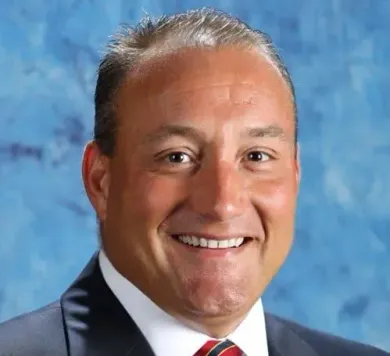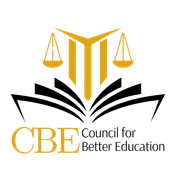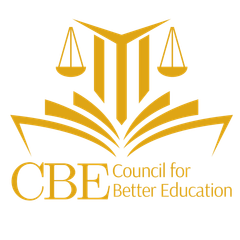About THE
Council for BEtter education
Who We Are
Protecting Kentucky’s Public Schools Since 1984
|
The Council for Better Education (CBE) is a Kentucky-based organization dedicated to ensuring every child has access to a high-quality, adequately funded public education. Since 1984, we’ve fought for fairness through legal action, policy engagement, and education funding reform.
- Our Council -

MATT THOMPSON
MONTGOMERY CO.
Treasurer

CARRIE BALLiNGER
ROCKCASTLE CO.
Secretary

ROB CLAYTON
WARREN CO.
PRESIDEnT

HENRY WEBB
KENTON CO.
VICE PRESIDENT

THOM COCHRAN
JOHNSON CO.
VICE PRESIDENT

JESSE BACON
BULLIT CO.
VICE PRESIDENT

Marty Pollio
Jefferson CO.
Vice President

CASEY ALLEN
BALLARD CO.
Vice President

Matt Baker
WALTON VERONA
Vice President

MATT ROBBINS
RETIRED SUPERINTENDENT
Past President

TOM SHELTON
RETIRED SUPERINTENDENT
EXECUTIVE SECRETARY


A Brief History of Council for Better Education
The Council for Better Education (CBE), formed in 1984, was started by a group of 28 superintendents from property-poor districts and other education advocates who were fed up with the legislature’s failure to fund the state’s schools and were considering suing the General Assembly. To participate in the suit, local school boards had to vote and agree to pay 50 cents per student to cover legal costs. Thirty-eight additional districts joined, and the 66 combined districts brought the lawsuit, in 1985 that culminated in the historic CBE v. Wilkinson ruling on Kentucky's constitutional education obligations.
The case was litigated in Franklin Circuit Court for more than two years with superintendents and students testifying about the conditions at their schools. The attorney for the General Assembly accused the school boards of not levying all permissible taxes and superintendents of mismanagement. Circuit Judge Ray Corns issued his decision declaring the state school system unconstitutional in May 1988.
While the Court stopped short of ordering specific education reforms, deferring instead to the legislative process in the first instance, it did provide the legislature with broad guidelines about what constitutes an adequate education. Those guidelines defined an adequate education as one that provides students with the opportunity to develop at least the seven capabilities in KRS 158.645.
The decision was ultimately upheld in 1989 by the State Supreme Court and the decision (Rose v. CBE) forced the legislature to act and in the next regular session the General Assembly passed the historic Kentucky Education Reform Act (KERA) in 1990, which created a school finance formula (SEEK) designed to more equitably fund the state’s public schools.
The court’s direction also set a standard for the definition of adequacy in funding. After years of review and study beginning around 1997, CBE tested this legal definition in 2004 in litigation challenging adequate funding from the General Assembly in order for all districts (students) to reach proficiency by 2014 as prescribed by KERA. However, in 2007, Circuit Judge Thomas Wingate found that although funding was not at an optimal level, it was not so inadequate to justify intervention into the role and responsibility of the legislature. However, Judge Wingate left the door open for additional litigation if the state of adequacy declined even further.


When the state’s assessment of student achievement, the Commonwealth Accountability Testing System (CATS), was replaced by the Kentucky General Assembly, the measure (CATS) that had been utilized to determine proficiency for all students was no longer available. This change led CBE to determine the need for a new evidence-based study in order to determine the cost of adequacy in funding. CBE hired Picus Odden and Associates to produce the Adequacy for Excellence in Kentucky report in 2014.
This study found that over the past decade, Kentucky has consistently funded its schools below national averages, but funding levels have shown varied results against comparable states. Kentucky’s teacher salaries have consistently been below national averages over the past decade. Kentucky’s educational outcomes have generally been mixed when compared to both national averages and comparable states. Since 2014, CBE has continued in existence in order to monitor adequacy and equity in funding and to track legislation passed by the General Assembly that impacts the financial condition of Kentucky schools.
In 2021, the Kentucky General Assembly passed HB563 – Education Tax Credits which would allow individuals and entities to receive a dollar for dollar tax credit for contributions made to private schools. CBE saw this vehicle for what it is, a form of educational voucher and as attempt to take public funds to use for private purposes, which violates our constitution and the Rose Decision.
CBE filed litigation in Franklin Circuit Court along with Frankfort Independent Schools, Warren County Schools, and some individual taxpayers as co-plaintiffs. The case was decided in our favor but was then appealed to the Kentucky Supreme Court, where the Circuit Court decision was upheld unanimously.
In 2022, the General Assembly passed HB9 – Charter School Funding which would have allowed the transfer of both state and local funds to private charter schools. In addition, this bill required the establishment of charter schools in Jefferson County and in Northern Kentucky and arbitrarily changed charter school establishment law and appeals processes for school districts larger than 7,500 students. CBE again saw these actions as a violation of our Constitution and the Rose Decision. Litigation was filed again in Franklin Circuit Court with Jefferson County Schools and Dayton Independent Schools as co-plaintiffs. Franklin Circuit Court again ruled in our favor. Currently the matter is in process of appeal with the Kentucky Supreme Court.


